Last-Minute NYC Holiday Gift Guide 🎁
We’ve created a holiday gift guide with presents for the intrepid New Yorker that should arrive just in time—


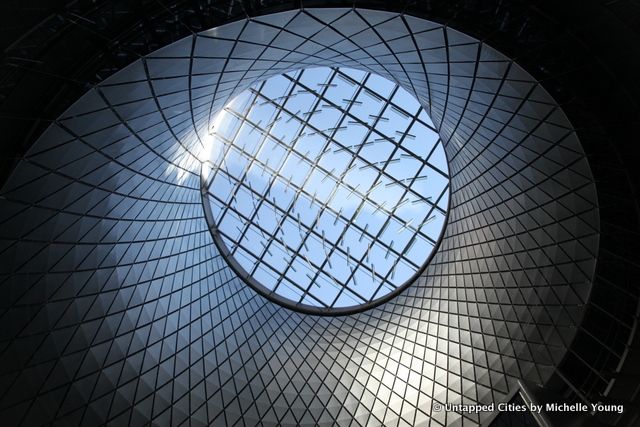
Senator Charles E. Schumer proclaimed that the Fulton Center Transit Hub was a “a metaphor for a revitalized downtown.” MTA Capital Construction President Dr. Michael Horodniceanu effused “Magical wouldn’t be too strong a word” for what officials are calling New York City’s “next great public space.” For years, the MTA had on its website that the Fulton Center hub would “immediately take its place among New York City’s great public spaces” when opened, akin to “a downtown Grand Central.” At the opening, Manhattan Borough President Gale Brewer said “Forget the Grand Central clock. They’re going to come here.”
Is this all just to distract from the political and financial drama surrounding the Calatrava train station just a block away? Because if there was going to be something in New York City to rival Grand Central Terminal architecturally, it’s the soaring bird, not the boxy glass building that houses the pretty Sky Reflector-Net. This doesn’t mean Fulton Street Transit Hub isn’t nice, functional, or a vast improvement to what was before. Here’s what it is, and what it’s not, in our most humble opinion.
The Sky Reflector-Net atop the Fulton Center oculus is by James Carpenter, and is the largest single work ever commissioned by MTA Arts for Transit. It’s made of 952 aluminum panels that reflects about 95% of the light that hits it. No aluminum panel is alike, so they were number coded for proper installation. The panels are attached to stainless steel cables, between two huge aluminum rings: the lower is 74 feet in diameter and the top one is 53 feet in diameter.
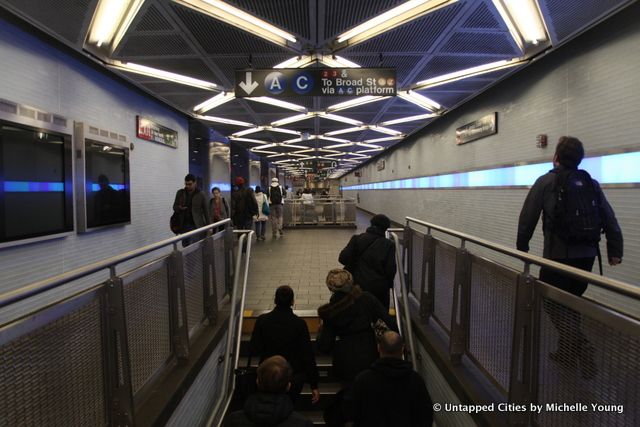
If you’ve ever tried to navigate between transfers at Fulton Street, it was pretty confusing. That’s because it was built piecemeal when there were many rival subway companies operating and they weren’t often cooperating. At Fulton Street, there were three companies across nine subway lines. The renovation, which cost $1.4 billion (90% with federal funds) has more direct paths and wider corridors. In terms of accessibility to subway lines, it’s definitely a step up from Grand Central Terminal–though Fulton Center didn’t have to incorporate Metro North. Here’s a tour of the Fulton Street station while under renovation in early 2013.
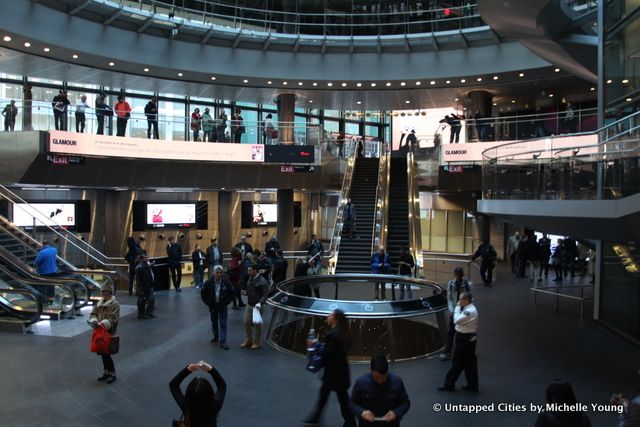
This is a huge boost for such an important downtown connection, in proximity to so many tourist sites and offices.
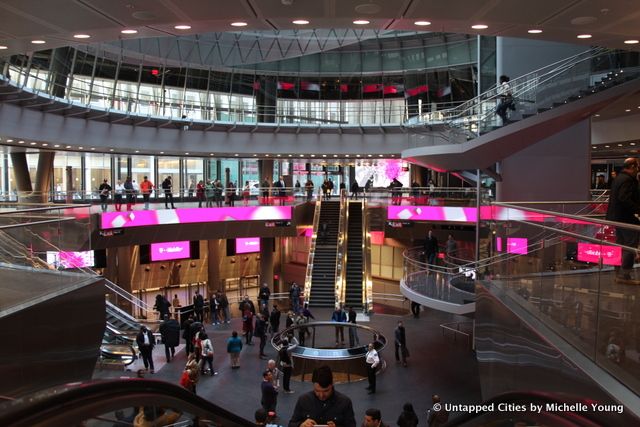
With is boxy, glass exterior and 50+ advertising screens, already filled with rotating ads from Burberry, T Mobile, Glamour and Vanity Fair, and the multi-level escalators, Fulton Center is on par with some of the country’s nicer shopping malls and airports, but Grand Central Terminal? Not sure.
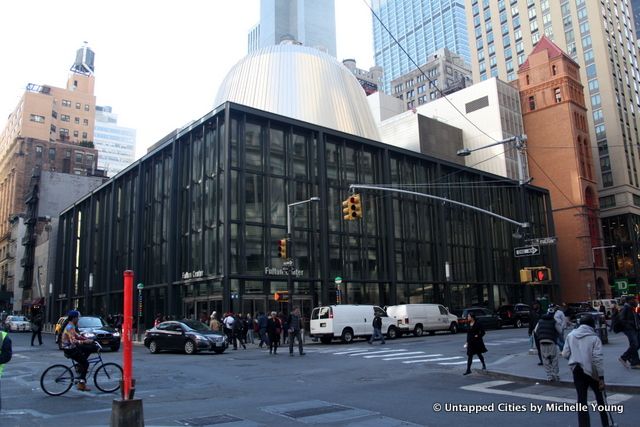
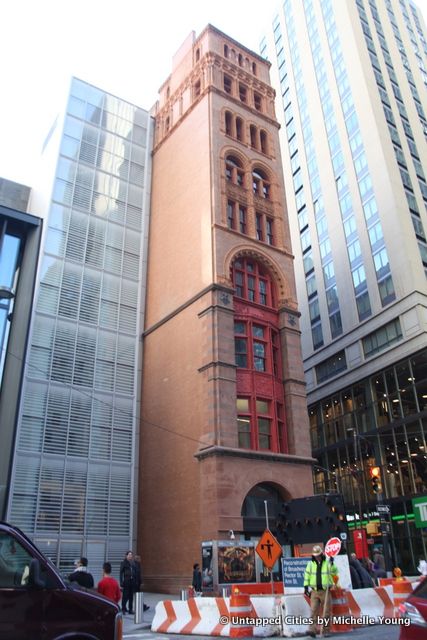
This slender Corbin Building was supposed to be demolished but preservationists convinced the MTA that a renovation of the dilapidated would add value to the new Fulton Center (i.e. 31,000 square feet of retail and office space for lease, 1,000 more square footage than the brand new transit hall). The Corbin Banking had acquired the Long Island Railroad and is credited with building the transit company up. A new foundation had to be dug for the building (by hand because the site was too narrow for machines!) and significant archeological finds from the work are now in the NYC Archaeological Repository.
Here are a few more photographs of the new transit hub:
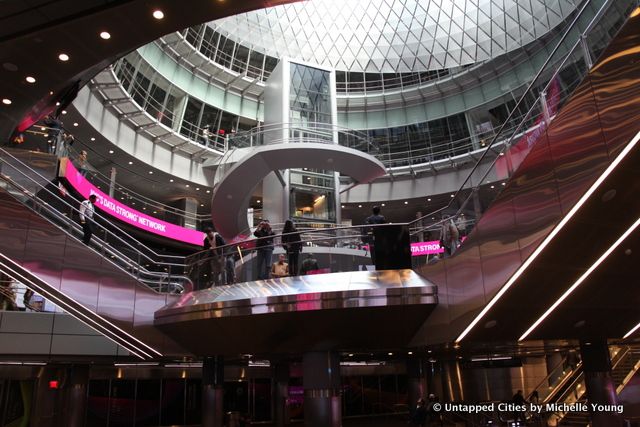
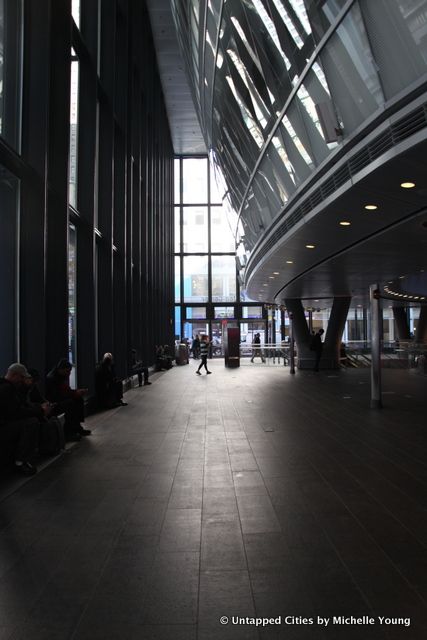
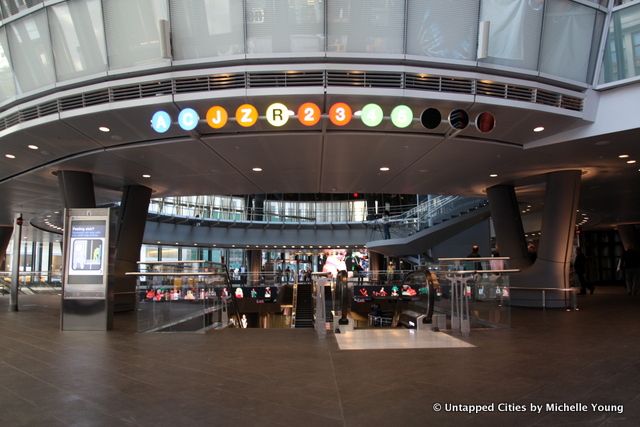
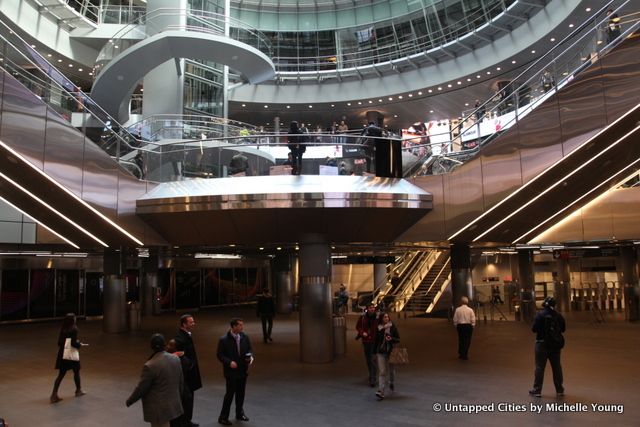
So now, compare it to Grand Central Terminal with its many secrets and check out the construction inside the Calatrava train station.
Get in touch with the author @untappedmich
Subscribe to our newsletter